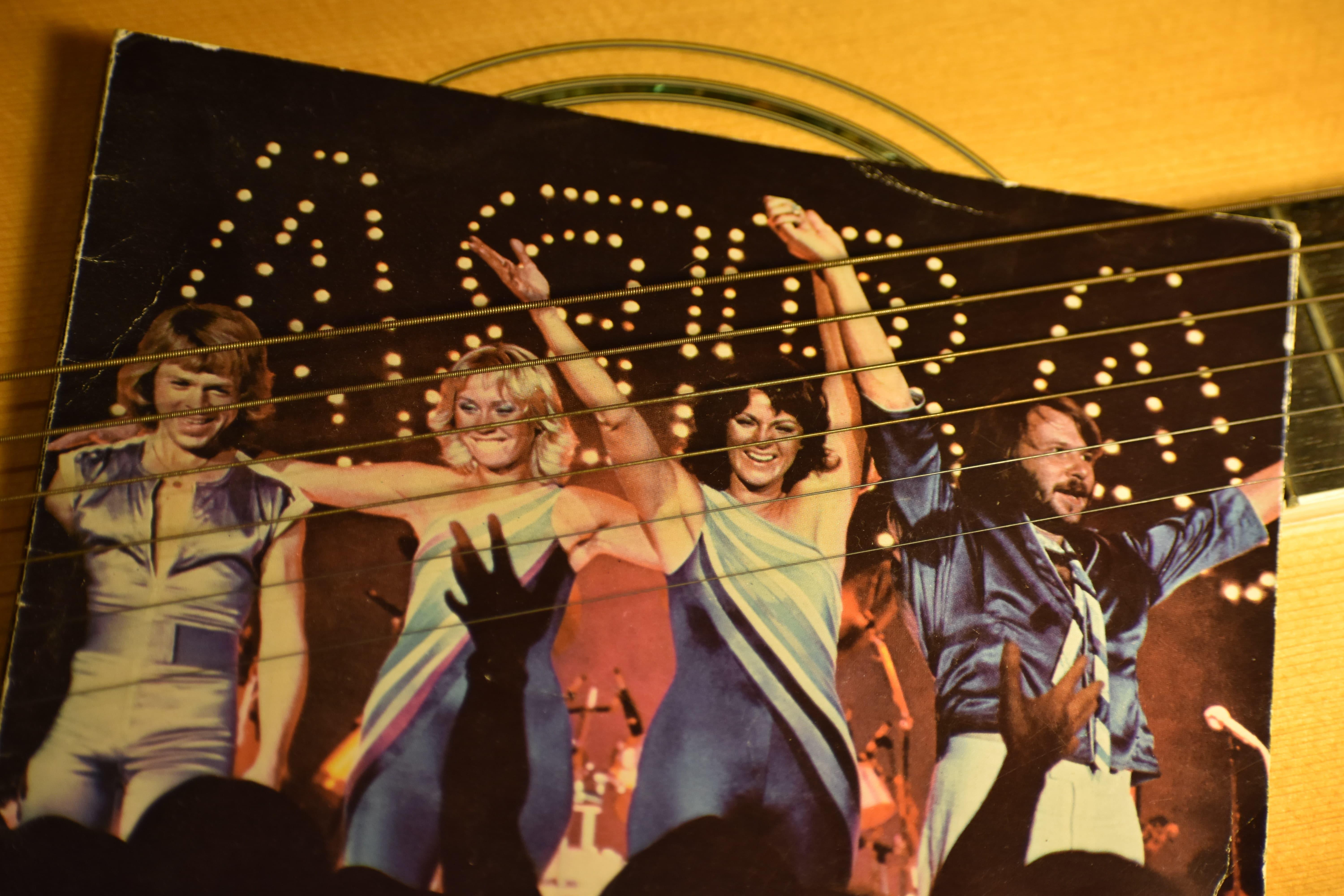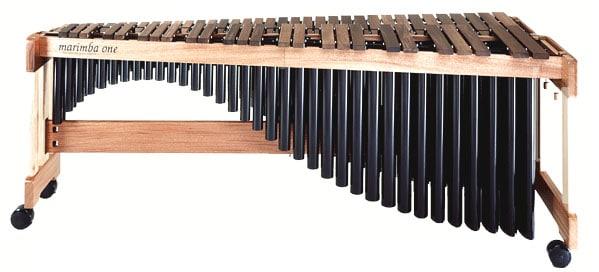Chapters
As part of our series on different types of percussion instruments, it’s now time to turn to the marimba.
We’ll be looking at all aspects of this percussion instrument – from its history to its relationship with other musical instruments, from some of the most incredible marimba performances to ways that you can learn to play the marimba yourself.
It’s a fascinating and gorgeous instrument – one that tends to get less attention than its more famous cousins, the xylophone and vibraphone, and one that deserves greater recognition than it currently gets. And now it’s time to make that happen.
So, let’s take a long look at the marimba. And hopefully, by the end of it, you’ll be as enthusiastic about this instrument as we are.
Here we go! You can also find out about learning the xylophone and playing the triangle too!


What is a Marimba?
First things first: what actually is the marimba?
The marimba is a percussion instrument made of parallel wooden bars that a marimbist – or marimba player – would hit with mallets made of rubber and sometimes wrapped in yarn.
Beneath each of the bars is hung a resonator or pipe that amplifies the sounds that the struck bars produce – something that gives the musical instrument a much more resonant sound than, say, the xylophone.
But, mentioning the xylophone, many people may well confuse the two instruments: both have bars arranged like the keys on a keyboard or a piano, however, the xylophone does not have the same resonators that produce the marimba’s deeper, fuller sound.
Indeed, the term ‘xylophone’ is sometimes used to refer to all tuned percussion instruments – even when they are technically classified differently. The larger family of marimbas, xylophones, and the glockenspiel are actually called idiophones.
As we have said, and as you will notice when looking at a marimba, all of the notes and pitches are arranged as if on a keyboard, with the accidentals raised so as to be easier for the percussionist who is playing.
Whilst the marimba can be performed by a soloist, it is also often found in the percussion section of an orchestra or in a percussion ensemble. Since the eighties, the instrument has been increasingly used in orchestral works – as we will see below.
You can also learn the steel hang with us!
A Brief History of the Marimba.
Now we know a bit about what the marimba is, it is worth knowing where it came from – because musical instruments don’t just arrive out of history fully formed.
However, the origins of musical instruments are not always entirely clear – and this is the case with the marimba. The picture is complicated by the fact that xylophones have been present for centuries in both east Africa and southeast Asia.
Whilst some people suggest that the instrument was brought to Africa by people who had migrated from Polynesia, it is just as likely that they developed independently. In fact, the west African balafon is a fairly close relative of the marimba itself, suggesting that this instrument didn’t come out of nowhere on the African continent.
The Marimba in Guatemala.
From here, one of the most unexpected developments in the history of the marimba is that it actually became the national instrument of Guatemala.
Whilst the earliest documentary evidence of the instrument comes from 1680 there, it is likely that it was being used earlier than this, with slaves who were taken from the west Africa to Central America attempting to recreate it in their new home.
Since then, the marimba has become hugely popular in the Americas, with attempts made to ‘modernise’ the instrument for professional percussionists. This included replacing the wooden boxes that were used as resonators with more sophisticated metal tubes.
Are there Different Types of Marimba?
Marimbas are one of these instruments that are not so fiercely regulated as, say, a cello or a piano or guitar. Given their roots, and their continued use in different forms across the world, there is no rigorous ‘standard’ in terms of size and shape.
Whilst you may expect to play a marimba of a fairly regular size if you are playing a percussion performance in orchestras, the marimba per se comes in a variety of forms.
Here we’ll look at two that are probably most familiar – yet understand that this list is not at all exhaustive.
The Chromatic Marimba.
The chromatic marimba is one of the most widespread types of marimba in the world. It is the one that you will see in percussion ensembles around the world and in philharmonic and symphonic orchestras.
It is known as the chromatic marimba because it features all twelve notes of western musical notation – something that distinguishes it from the ‘simple’ marimba which can be tuned only into one key at a time.
Most commonly, these range in size between four and five octaves. However, we repeat that there is no real standard for this.
The Concert Marimba.
Whilst the chromatic marimba is the domain of the single percussionist, the instrument that is known as the ‘concert marimba’ can be played by two or more percussionists simultaneously.
Whilst these don’t tend to be used in western classical music, they have existed across the Americas since the seventies, as a result of the attempt to revive the ancient practices which featured them heavily.
Learn about the tambourine whilst you are here!
Where You Might Have Heard the Marimba.
Honestly, unless you are into contemporary music or ‘world music’, it may well be that you have never heard a marimba being played. And whilst that is completely fair enough, it is time that you went and checked it out.
From chamber music to orchestral percussion, from Afro-Cuban music to ABBA, the marimba pops up everywhere. Let’s take a look at some of the best places to hear it.

ABBA – Mamma Mia.
We told you it pops up everywhere. The opening bars of probably ABBA’s most famous tune are led by a marimba – just before the electric guitar comes in.
Rolling Stones – Under My Thumb.
Ignoring the fairly distasteful lyrics, the Rolling Stones’s ‘Under My Thumb’ is a pretty wicked piece of music. And, if you listen carefully, the most interesting of the rhythmic lines is performed on the marimba.
Steve Reich – Six Marimbas.
We said above that lots of composers about half a century ago started to write music for marimba.
One of the most interesting of these was Steve Reich’s Six Marimbas, a minimalist piece that combines repetitive rhythms with limited instrumentation and harmonic complexities.
Some Things to Know about Playing the Marimba.
Thinking about it, the percussion section of an orchestra does have quite a busy job – and does need quite a serious collection of skills.
Because, sure, whilst they need to know how to whack a drum or play cymbals correctly, they need a fairly excellent grasp of mallet percussion instruments too.
Playing the marimba isn’t exactly easy – particularly when, as many performers do, you are required to play with four – or six, or even eight – mallets at a time.
Different Grips.
Depending on which part of the world or school of music you are learning in, and depending on how many mallets you are using at a given time, you will choose a different grip with which to hold the mallets.
These tend to be known as the Burton grip, the cross grip, and the Musser-Stevens grip – and which one you will use will depend on whether you are intending to play lots of chords, lots of melodic lines, or whether your piece demands that you make lots of leaps between large intervals.
Start on the Glock or the Xylophone.
The marimba can be a little intimidating when you first approach it. So, instead of diving in headfirst, try out some different instruments so that you get the hang of its arrangement.
The glockenspiel and the xylophone – as well, by the way, as the piano – are arranged in the same way as the marimba. And navigating these is that little bit more straightforward than the marimba.

Where to Find a Marimba Teacher Near You.
When the marimba is that intimidating, it is worth getting yourself someone who can talk you through the process of learning it.
The best way to do that is to get a private tutor. And the best way to do that is through Superprof, the platform that connects budding students with enthusiastic tutors from around the world.
At Superprof, we have thirty percussion tutors who are available to teach you – either online or, if you live nearby, at their teaching studio or in your home.
It is worth every moment!















